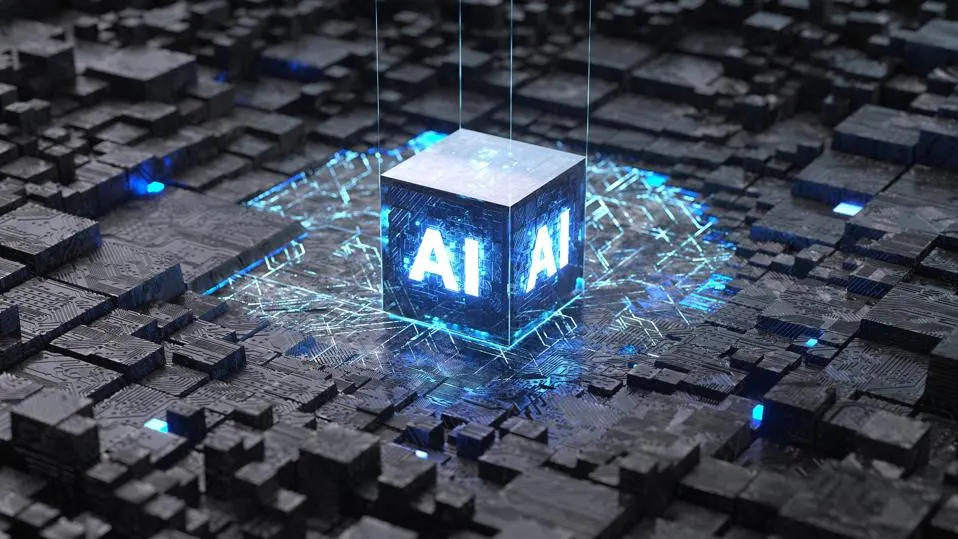Spotting AI Washing: How Companies Overhype Artificial Intelligence
7 May 2024
Although I firmly believe AI is a hugely transformative technology that will change the world in many ways, it’s also clear that there is a lot of hype and hot air around the subject!
It’s something that inevitably occurs with any exciting technology, particularly when there’s a lot of money to be made.
This is no surprise, given that past studies have shown that startups that mention ‘AI’ attract 15 percent to 50 percent more investment than those that don’t!
So, it’s important to be able to tell the difference between what’s real and what is being concocted by marketing departments simply interested in what they can sell us.
Here, I’ll be looking at the phenomenon of AI washing – what it is, who is doing it, why it is dangerous, and perhaps most importantly, how to spot it.

What Is AI Washing?
In basic terms, AI washing involves exaggerating the capabilities of a product or service that is sold as ‘AI’ in order to make it look more sophisticated, innovative or intelligent than it actually is.
It can be seen as a form of bandwagon jumping. The term itself derives from ‘greenwashing’, which is frequently used to describe projects, products or services that overstate how environmentally-friendly they are, to appeal to eco-conscious consumers.
Marketers attempting to AI-wash their products and services will often:
· Overstate their capabilities – implying that their AI models and algorithms are more powerful, useful or flexible than they actually are.
· Misleadingly use the term ‘intelligent’ – when, in fact, the software doesn’t use algorithms capable of learning and making decisions without being explicitly programmed how to do so.
· Offer very vague definitions – Not specifically explaining which elements are ‘intelligent’ and which rely on traditional software methodologies or human input.
· Downplay the amount of human input involved – either on the part of the service provider or the user.
One way of looking at it is that AI washing is like painting ‘go-faster’ stripes on a car without upgrading the engine, allowing marketers to capitalize on the excitement around AI while not offering anything that’s genuinely revolutionary.
Why Is It A Problem?
While it may seem like the kind of harmless marketing bluster we’re all used to in the field of business technology, as with greenwashing it creates some real challenges and risks.
For example, it can stifle or obscure true innovation as real AI breakthroughs struggle to be noticed amid the hype and noise of so many exaggerated claims.
It also erodes consumer trust in AI, as users become cynical about claims made by the industry in general.
It creates challenges for investors, who want to allocate funds to genuinely innovative projects and may miss opportunities to help bring projects that offer real technological advances and value to market.
And it can also lead to inflated expectations around what AI is currently capable of achieving, which could result in businesses setting unrealistic goals and targets.
What Are Some Examples Of AI Washing?
Many home appliances – from fridges and kettles to vacuum cleaners and thermostats, are labeled as ‘smart’ or ‘intelligent’ when they should more accurately be labeled as ‘connected.' Despite being linked to the internet and controllable via apps, they often do not have the capacity to learn or operate autonomously, as is generally expected of AI applications.
Many companies offer tools that they say can automate the process of creating videos, copy and content. In reality, they often require significant human input in order to generate output of an acceptable quality.
For a specific example, Coca-Cola was accused of AI washing for a campaign claiming it had used AI to create a new drink. Although it stated that the Y3000 flavor had been ‘co-created’ with AI, there was no real explanation of how AI was involved in the process. Some critics pointed out that it seemed to be name-dropping AI to make the product seem more innovative than it actually was.
And in the world of finance and investment, two firms were this year charged by the SEC with making ‘false and misleading statements’ regarding the extent to which AI is used to manage their investment strategies.
How To Spot AI Washing In The Wild
Some who are very skeptical about the capabilities and potential of AI will claim that everything called ‘AI’ today is effectively ‘AI washing’, because computers aren’t yet capable of true intelligence.
But for the purposes of this article we are using the definition of AI that’s currently accepted - software tools that can learn how to carry out tasks by being trained on data, rather than explicitly programmed how to do them. This form of real-world, business-focused AI is often referred to as machine learning.
Spotting when companies are trying it on involves developing a skeptical eye for these claims. Look for mentions of specific models, technologies or algorithms that are used, such as natural language processing, neural networks or deep learning. And seek out mentions of ‘transparent’ AI, where companies are open about the types of data and algorithms that are involved.
Beware of companies that seem unwilling or unable to describe how their technology works. Sometimes, this information will be found in case studies or white papers published on corporate websites.
And if you’re dealing with a sales representative, ask them to explain what steps are taken to avoid bias in their data and algorithms, or AI hallucinations. If they don’t have solutions to these problems, it’s possible that they aren’t really using AI at all.
This skepticism is critical for making better decisions about what technology to invest in, as well as contributing towards the development of a more honest and transparent AI landscape in the long-term.
Related Articles
The 12 Best Smart Home Devices Transforming Homes in 2025
By now, “smart” versions exist of just about every home appliance, gadget and gizmos we can think of. However, manufacturers continue[...]
11 Most Reliable AI Content Detectors: Your Guide To Spotting Synthetic Media
Since the launch of ChatGPT just two years ago, the volume of synthetic – or fake – content online has increased exponentially.[...]
The AI-Powered Citizen Revolution: How Every Employee Is Becoming A Technology Creator
Something remarkable is happening in organizations around the world.[...]
6 Mistakes IT Teams Are Guaranteed To Make In 2025
The next wave of artificial intelligence isn't just knocking at enterprise doors - it's exposing fundamental flaws in how organizations approach technology transformation.[...]
2025’s Tech Forecast: The Consumer Innovations That Will Matter Most
Consumer technology covers all of the tech we buy to make our lives more convenient, productive or fun.[...]
7 Healthcare Trends That Will Transform Medicine In 2025
Healthcare has evolved dramatically in recent years, with technology driving countless new opportunities, just as demographic and societal factors have created new challenges.[...]
Sign up to Stay in Touch!
Bernard Marr is a world-renowned futurist, influencer and thought leader in the fields of business and technology, with a passion for using technology for the good of humanity.
He is a best-selling author of over 20 books, writes a regular column for Forbes and advises and coaches many of the world’s best-known organisations.
He has a combined following of 4 million people across his social media channels and newsletters and was ranked by LinkedIn as one of the top 5 business influencers in the world.
Bernard’s latest book is ‘Generative AI in Practice’.










Social Media